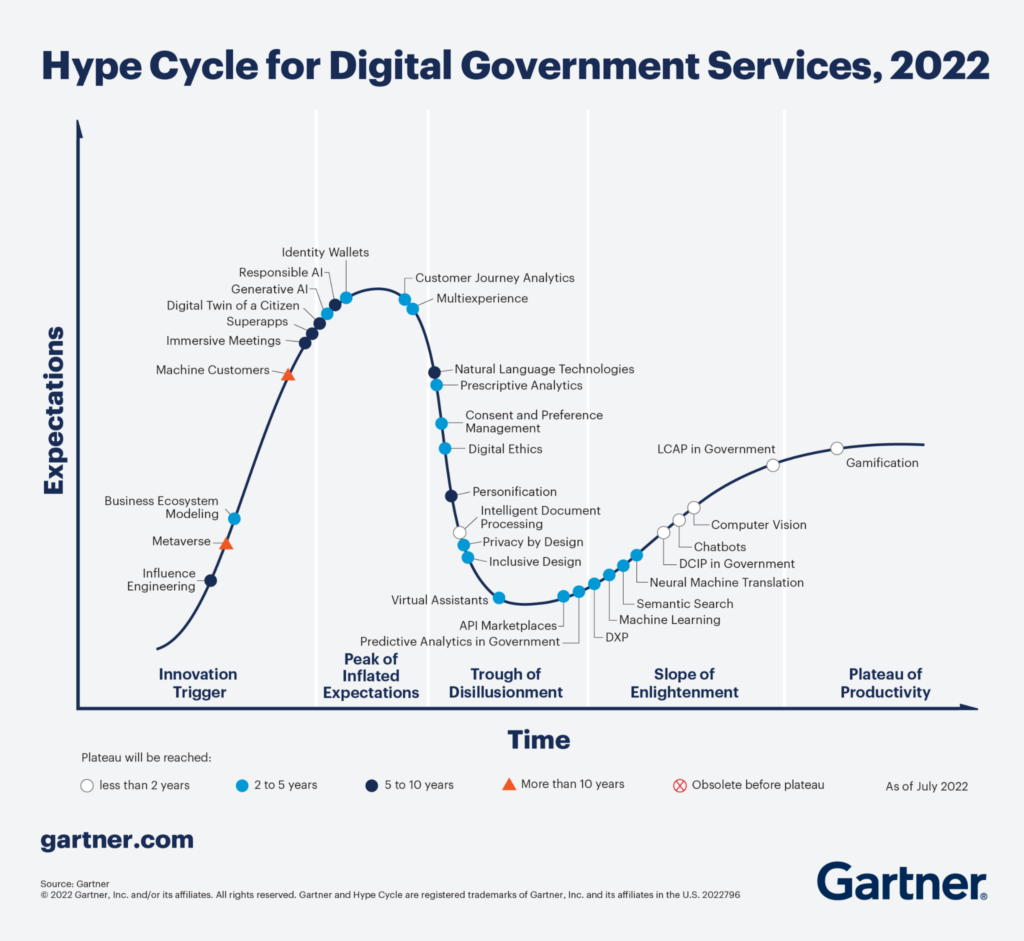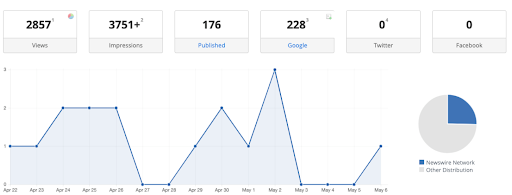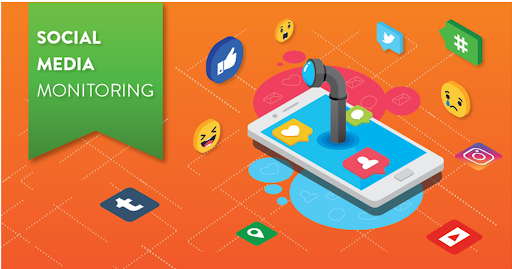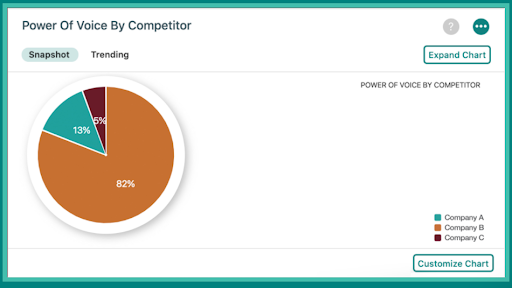The entrepreneurial CMO is “beholden neither to the status quo nor to disrupting it for disruption’s sake.” That premise, according to Forbes, helped to guide its selections for the recently released 2023 Forbes Entrepreneurial CMO 50 list.
It is a herculean challenge to drive change in relatively stable environments, let alone be bold enough to transform brands amidst a year of chaos defined by an evolving pandemic, inflation, structural workforce adjustments and a polarized country willing to buy or boycott products based on a brand’s perceived “wokeness.”
Disruption is not only being fueled by undeniably negative chaos agents, but also by more complex ones that pose endless possibilities…and risks. Generative AI and ChatGPT grab headlines, and rightly so, but for so many brands the pandemic has accelerated enterprise-wide digital transformation.
Forbes acknowledges those challenges – and more – in identifying 50 CMOs who succeeded despite the unprecedented, multi-faceted risk climate. Here are a few narratives that emerged from the change agents selected for the Forbes 50 list:
Being data-driven, but human defined
Nobel laureate awardee Ronald H. Course once said “if you torture the data long enough, it will confess to anything.” Ironically, in some ways, CMOs are being tortured by the very data they rely on so heavily – particularly when it comes to the crushing volume of marketing data. A 2022 survey of 300 global CMOs by integrated marketing data platform Adverity found that two-thirds of them feel the volume of marketing data available has become overwhelming.
This love-hate relationship with data may at least be partially responsible for its conspicuous absence within the insights provided by the 50 CMOs named by Forbes. At a time when the ability to acquire and analyze data seems to dominate so many brand and business conversations, it was clear that entrepreneurial marketing leaders aren’t looking to be defined solely as data crunchers. It is undeniable that data has become core to internal and customer-facing operations, table stakes even, but marketers acknowledged its limits.
More than one CMO recognized by Forbes referenced that while data drives decision making, there are risks in having it solely define brand strategy as if it is a panacea. Marketers such as Carla Zakhem-Hassan, CMO at JPMorgan Chase, highlighted the importance of humans in the decision making process. She wants to always ensure “…the company infuses humanity into their products, services, and marketing approach” and that her team knows they “need the data, but we also need the humanity.”
Injecting B2C creativity into B2B campaigns
B2B brands often face narrower and more rigid guardrails when it comes to unleashing creative ideas into the market. B2B prospects are bottom-line driven; the sales cycle can be long; and the hierarchy of decision makers is complex. Edgy campaigns that effectively capture the attention and dollars of consumers may strike the wrong chord with business buyers who just want to understand how you can help solve their challenges.
But entrepreneurial CMOs do not want to be boxed in. Accenture Chief Marketing & Communications Officer and Forbes 50 honoree Jill Kramer pushes back against the notion B2B marketing is “uncreative” by launching campaigns like “Let There Be Change” – designed “to help B2B CMOs reframe the business goal and rebrand the marketing term using a more entrepreneurial approach.”
Re-writing playbooks rather than tweaking them
If a CMO is always trying to adapt to change, they probably aren’t driving it. The notion of a post-pandemic “return to normalcy” when it comes to how and where people work or the mechanisms brands use to engage with consumers is flawed at best, self-destructive at worst.
Building campaigns that anticipate the unwinding of structural changes that never arrive are sunk investments. Forbes 50 marketers recognize this; ServiceNow CMO Michael Park cites how marketers are missing an opportunity if they simply try to adapt to volatility, and instead should be using it as a springboard to the road ahead, which provides “almost unlimited opportunities to redraw the parameters we set our growth targets against.”
The same can be said about the nature of work. Melissa Selcher, Chief Marketing and Communications Officer at LinkedIn makes the point that 5 years ago, you did not have tens of millions of people creating social channel content around work. People commuted to their offices, spent the day there, and then returned home. As Selcher explains, “no one talked about work, we just worked.”
The pandemic changed all of this; the how, when, and where people worked became diverse and compelling, and also defining in a way that current and future employers have to acknowledge.
Aiming for micro-failures and macro successes
It isn’t novel to suggest that failure breeds success. As Dale Carnegie suggested “Develop success from failures. Discouragement and failure are two of the surest stepping stones to success.”
But the trick is to make brand strategy failures manageable, not fatal. Ricardo Marques, VP Marketing, Michelob Ultra at Anheuser-Busch/InBev, talked about micro-failures when reflecting on the brand’s “McEnroe vs. McEnroe” initiative, which, pardon the pun, served up what it claimed to be the world’s first hybrid tennis match of real John McEnroe versus virtual representations of himself at various career stages. “We had micro-failure moments throughout the project that would have killed it in a traditional approach, but didn’t because we remained agile and flexible throughout, adjusting, and calibrating when faced with challenges.”
Other Forbes CMO winners addressed the need to not only correct failures, but convert them into opportunities. Uber VP of Marketing David Mogensen shared that when Chicago Bears QB Justin Fields tweeted about an Uber Eats delivery fail, the Uber team eyed an opportunity that showcased the value of agility. They pivoted from a ready-to-launch campaign to a call-and-response spot where WR Odell Beckham addresses the QB’s complaint. But to ensure it was a campaign of substance for the customer base, the brand promised a $0 delivery fee for 3 months if app users encountered similar problems.
Similarly, Kofi Amoo-Gottfried, CMO at DoorDash reinforced the need for marketers to learn from successes and failures. A glitch allowing users to order from Cheesecake Factory without paying became an opportunity to later partner with the well-known chain to hack and gamify its extensive menu – driving a double-digit bump in website traffic and a tangible orders increase.
Perfect strangers can make perfect partners

A little something about me; if I have an opportunity to work Balki Bartokomous into a blog post, it is going to happen. Balki and Larry were in fact perfect strangers in the hit 80s/90s sitcom, and it is safe to say that top marketers are not shying away from exploring unexpected alliances with celebrities, viral influencers and brands, as well as other content creators to reach desired audiences.
Lara Hood Balazs, General Manager and CMO at Intuit focused on establishing a more dominant unifying brand elevating its better known products such as TurboTax, QuickBooks, MailChimp and Credit Karma. Updating the brand’s identity included forging a unique partnership with Mr. Beast for its #RaceToTheRefund campaign.
Nothing excites Bluetext more than working with marketing entrepreneurs who want to be in the driver’s seat when it comes to transforming brands and markets. Click here to learn more about how Bluetext is the innovative partner you need to become the brand that customers want, and the competition envy.
Digital transformation creates challenges and opportunities for B2G marketing leaders seeking to sell to government agencies. The appetite for digitization of citizen services accelerated during the pandemic as agencies recognized a more intense need to transform communications and engage with citizens. At the same time, the DoD moved forward with a digital-forward strategy to guide the industry on how to best deliver transformative technologies.
B2G brands competitively positioning themselves to pursue and capture digital transformation-driven contract opportunities benefit from a smart, holistic public relations program aligned with the pace at which agencies are evaluating, adopting, and deploying new technologies.
So much of Bluetext’s PR and marketing work with government contractors and IT providers involves a keen understanding of how government buyers evaluate, procure and deploy technologies and services – and the messages that resonate most with them. For B2G marketers creating PR programs that tap into public sector digital transformation, there are a few key considerations:
Agencies Don’t Transform Overnight
Less than one in ten (7%) government leader respondents in an EY 2022 report said they believe their organization has achieved its digital transformation goals. This doesn’t mean that digital transformation isn’t moving forward but serves as a gut check that B2G brands must stay attuned to the pace of change.
The tricky balance for B2G CMOs is to effectively communicate how their products, technologies, and services can future-proof agencies while acknowledging that legacy technology investments cannot be unwound overnight. In other words, media coverage and thought leadership cannot ignore where agencies are today.
Similarly, there are nuances to digital transformation messaging, for example when it comes to workforce automation. PR may be required to address the fact that, among government workforces, transformation can create uncertainty. Artificial Intelligence and automation can equate to fears of employees being replaced. If B2G brands leave it up to the agency customer to overcome workforce resistance to new technologies, adoption can be slowed and contract opportunities will dwindle.
Match Thought Leadership To Right Hype Cycle
There are perils to spinning wheels on Gartner Hype Cycle™ “Innovation Trigger” technologies that may be garnering media coverage but are years away from commercial viability. The “Innovation Trigger” hype cycle phase refers to when “A potential technology breakthrough kicks things off. Early proof-of-concept stories and media interest trigger significant publicity. Often no usable products exist and commercial viability is unproven.”
In the 2022 Gartner Digital Government Services Hype Cycle, the research firm identifies technologies such as Metaverse, immersive meetings, and influence engineering and machine customers that are years if not decades away from reaching a plateau.

In the same way that CIOs need to keep their eyes on potentially transformative technologies and practices that are years from widespread adoption – and start developing positions on these trends – marketers must think about how best to associate their brands with these emerging technologies. Thought leadership programs are a good place to start.
We work with B2G brands that face diverse challenges on the sales side. For some, they may be an established, credible brand seeking to sell a product or technology their brand isn’t traditionally associated with. This could be a result of mergers and acquisitions that have unlocked new product portfolios and capabilities. In other cases, behemoth brands are being challenged by nimble, upstarts perceived to have more cutting-edge solutions. Hundreds of challenger brands have turned to Bluetext for PR services to help provide air cover for the sales team – so that they aren’t spending half the meeting establishing credibility and can just sell based on merits.
Finally, disruptor technologies can create sufficient confusion to paralyze the buying process. Thought leadership can educate target markets to prevent this from occurring. Case in point: ChatGPT, which is spinning the heads of marketers and communications professionals across all industries. If you provide automation technologies to the public sector, agency decision-makers may wonder if a costly solution will be rendered obsolete by ChatGPT in 12-18 months and decide to wait it out. More likely, ChatGPT can be used to augment a solution, but buyers will never know that without effective earned and paid content campaigns.
Thought leadership programs are an effective way for B2G marketers to:
- Start associating your brand with trends and technologies that you will be offering in the near future without creating headaches for the sales team by sending traffic to a source with no product
- Educate the market on pain points that your solution will address, so that when you do launch the value proposition has been established
- Build up a Subject Matter Expert (SME) program with experts who can become sources on these technologies for journalists or generate interest from conference organizers
Data-Driven PR Can Make Or Break The Transformation Case
B2G brands often sit on access to PR-valuable data that is untapped for various reasons. Are state and local government leaders tapping AI to deliver citizen services? Will federal healthcare leaders increase their spending on data analytics in the upcoming fiscal year? There are external entities that track some of this data, and there is always the option to drop $25,000 on a research firm to create a survey vehicle. But most firms have built valuable mechanisms to reach customers and prospects via email and other channels, and there are seamless, non-intrusive approaches to acquiring market data that can be used to anchor PR initiatives (media pitches, bylines, social media posts, etc.).
The value of the data is to gain a stronger foothold on where your customers and prospects are as it relates to digital transformation. Leveraging that data for media pitches, byline articles and social media strengthens the business case that there is a need and appetite for your technologies.
Get Creative Telling Customer Stories
From a PR and marketing perspective, it isn’t the word of the B2G brand that will have the greatest impact on an agency prospect – it is the voice of the customer. Because agencies moving forward with digital transformation want to see that what they want to do has been done before. That digital transformation is possible, that ROI is quantifiable and that investments are justifiable.
The problem? It can be extremely difficult to secure approval to publicize government customer stories through press releases, media coverage, website case stories or via social media. This is a common frustration our clients and prospects often mention right off the bat. Traditional methods of securing agency approval rarely work, which is why Bluetext deploys creative approaches to tell a customer story through award programs, events and other mechanisms.
If you would like to learn more about how to effectively create a B2G PR program that taps into public sector digital transformation, reach out to Bluetext at https://bluetext.com/contact-us/.
Al Davis, the former coach and owner of the Oakland Raiders, famously coined the phrase “Just win, Baby!”. And while that’s the goal for any PR agency building out an award nomination for clients, it’s easier said than done. How do agencies make their nomination stand out from the thousands of others that the judges receive? What do clients gain from winning these honors? For such a common staple in PR campaigns, award nominations are often not leveraged for maximum impact.
How to Build a Winning Nomination
Bluetext develops and executes award programs for clients across a broad range of industries and verticals. We hold considerable expertise with B2B Tech and B2G Tech Award Programs, and based on our experience, here are some keys to success when it comes to winning award submissions:
First, avoid cluttered technology jargon and be clear in your nominations.
Award nominations that struggle to present a compelling case are often guilty of being too product-oriented. Assume the judges do not know anything about your solution. It’s crucial to articulate the benefits in as clear of a manner as possible rather than just stuffing entry sections with generic content to hit word count targets.
Second, before submitting your final nomination, ask yourself – does this nomination address what the judges are looking for in a submission?
It’s always important to build a nomination that fits what the judges are looking for. Do you homework on the criteria and past winners. The website of the organization hosting the awards often has a list of criteria on what to answer when nominating clients’ solutions. In fact, some of them even hold webinars on what defines a winning submission. Adhering to those guidelines offers the best chance of winning.
Third, when drafting award nominations, it’s important to tell a story about how the solution is addressing a significant industry problem.
Build a case for the product you are nominating by answering the following questions – What’s the industry problem? What separates a client’s technology from industry competitors? Why does this particular piece of technology drive superior results? Winning nominations offer such an intriguing story about their clients’ products that the judges can’t help but recognize the importance of this solution.
Finally, always be honest with clients.
Just because a client wants to move forward with an award doesn’t mean it is a smart use of time and financial investment. If you have concerns, make your case or push to strengthen the nomination. Review past year’s award winners to demonstrate what it really takes to bring home the hardware.

Benefits of Winning Awards
Bluetext also believes there are four key benefits of winning these awards:
1. Enhances Brand Reputation
Winning awards provides positive momentum for a company’s solutions by offering third-party validation of a client’s technology or executive team leadership. Wins serve as testaments to the hard work the company has been putting into its solution. These accreditations boost both internal and external stakeholders’ confidence in the product and the company’s direction.
2. SEO Boost
Award wins are easy opportunities to leverage in press releases and social media. Often, the organization behind the awards will also celebrate the winners with press releases of their own. Wins are therefore easy ways to bring your company to the top of search engines’ results page.
3. Unlocks Important Networking Opportunities
Typically, awards come with a presentation or ceremony that presents opportunities to mingle with businesses and executives in the same industry. Furthermore, the increased brand awareness that comes with winning awards may open the doors to new business opportunities and potential partnerships.
4. Air Cover For Sales Teams
For many tech companies, especially those competing with more recognized names – sales teams often spend a chunk of their new business meetings establishing brand credibility. Showcasing highly regarded award wins can assist in overcoming the credibility hump.

The Last Piece of the Puzzle
Finally, before drafting the award, be sure it aligns with the client’s overall PR goals and strategy. Oftentimes these awards have a cost associated with them. With that in mind, it is important to align with clients on what nominations make the most sense for their overall PR strategy to get the most out of this investment.
Learn more about Bluetext’s success in submitting award nominations and contact us if you’re interested in partnering with us to get your award nominations on track.
Software as a Service (SaaS) companies often run into a problem when they launch a new product or unveil updated features: they find it hard to secure the outstanding press coverage they expected. There’s a reason for this: the SaaS market is extremely crowded with tons of capable competitors, and, as a result, the media landscape for these technologies is heavily saturated.
To add to these challenges, SaaS technology is intangible. It is, as the name implies, a “service.” Unlike physical products that can be examined, physically held, or even photographed, SaaS is software delivered via the cloud.
So, when looking to drive media coverage, the biggest question SaaS providers need to answer is how do they differentiate themselves from their competition? Looking to PR agencies as a resource is a great way to solve this dilemma. The PR agencies that are most successful in the SaaS space are the ones with a deep and wide understanding of the competitive landscape. An experienced B2B PR agency brings an informed third party perspective to identify where market gaps and needs exist, and how your particular solution can fill that gap. As an agency, these PR professionals have an acute awareness of industry competitors’ voices and most sought-after media outlets. The agency can lock in on your company’s niche, cultivate creative solutions to bring the organization’s message to the market, and understand the media landscape in order to capitalize on what storylines are driving coverage.

Finding SaaS Providers’ Niche
The first responsibility of any PR agency working with a new SaaS client is to determine what differentiates their client’s product from the competition. As the client, you have expert knowledge of everything your product has to offer, but may be challenged to find that one angle that makes you unique. For example, is the solution a scalable, cost-effective offering that enables organizations to deploy it quickly? Or does the technology excel by delivering top-level security automated backup to facilitate easier user management?
Whatever the case may be, in order to secure media coverage in the desired tech-media outlets, PR organizations must hone in on what makes that SaaS provider’s technology noteworthy. Once this differentiating factor is identified, the next step is to come up with creative tactics to highlight the benefits of this technology to intended prospects.
![]()
Cultivating Creative PR Solutions
Given the SaaS marketplace is so crowded, core PR components of strategic news announcements, conducting media outreach, and authoring thought leadership contributed pieces hold value, but there is more that needs to be done. As such, it’s crucial to experiment and be as creative as possible to create the most engaging content.
One potential alternative solution is hosting webinars. Webinars enable SaaS organizations to bring their message directly to digital audiences. It’s a strong engagement tool that can be leveraged across social channels for multiple months and on your website after the live premiere, initially as gated content and then for open viewing. Inviting key members of the press to attend is a great way to cultivate relationships with reporters as well.
Creating testimonials of past customer success stories is another way to demonstrate how SaaS providers’ technologies drive key wins. These can take different forms – videos, print/digital case studies, or even a dedicated page on the organization’s website – but the goal should always be the same: draw attention to how your SaaS solutions have succeeded in the past and what made them successful.
Finally, social media is a critically important tool that can not only promote how SaaS providers’ solutions work but also serve as another way to engage with reporters and news outlets by sharing past coverage pieces that are informative, engaging, and well-written primers on topics that matter most to the SaaS organization and their customers.

Capitalize on the Media Landscape Momentum
“Newsjacking” larger PR stories with relevant SaaS messaging is also crucial to driving media coverage. In fact, the most successful SaaS PR pitches often leverage stories or trends happening in specific industries related to how the as-a-Service model meets organizations’ pain points.
For example, when COVID-19 hit, government agencies were forced to reexamine how they work in an unfamiliar setting while school systems and students had to quickly adapt to remote learning. These rapid shifts demanded new technologies for workers and students to succeed that could be deployed quickly and cost-effectively. Both situations drove significant media coverage in the early months of the pandemic.
Leaning into the stories that are resonating most with the media at a given time enables technology providers to emphasize trends they’ve seen work best for their customers and contribute to meaningful conversations. Newsjacking is where you should especially lean on a PR agency’s expertise. While your company may have subject matter experts in technology, think of your PR agency as your subject matter expert of the media landscape.

How to Choose the Right PR Agency Partner
For SaaS providers that are feeling overwhelmed when it comes to dealing with the media, PR agencies like Bluetext can serve as a valuable resource. But these technology organizations should be wary of who they enlist as a partner.
SaaS organizations should be sure to ask for agencies’ past client work and case studies. Feel free to ask questions that test the agency’s knowledge of the SaaS space. You want to be confident that your PR agency partner features individuals who have successfully worked in this industry previously.
To drive the most success with PR agencies, it is essential that SaaS providers feel they are incapable and knowledgeable hands. Embarking on partnership with an organization you do not trust will simply lead you back to where you started: unsure how to drive media coverage that features your product.
Want to know more about Bluetext’s past success with SaaS PR clients? Get in touch with us.
A common question we get from new Public Relations clients and prospects at Bluetext is ultimately the most important one: how do you measure results? Organizations, understandably, seek the same depth and breadth of metrics for public relations that they can achieve with their ad spend, SEO, and other lead generation activities.
If you go back several years, the metrics query is one that would trigger beads of sweat to stream down the foreheads of PR professionals across the world. Why? Because the way marketers want to measure (activity spend — sales) doesn’t always fit neatly with how public relations works.
If a B2B, B2G, and B2C technology firm decision-maker reads an article referencing your company and then three weeks later decides to visit your website or reach out to a sales contact, it is very difficult to track that back to the initial PR hit as you would if the lead clicks on a digital ad or trackable piece of content. Top of funnel PR to build brand awareness and leads also holds significant value (clients won’t buy your services if they don’t know who you are and what you do), but again these are not always activities that will result in a prospect immediately rushing to your website or sales team.
The good news is that PR measurement tools have become increasingly sophisticated, which empowers forward-looking agencies to make leaps in using innovative technologies and approaches to demonstrate how PR spend connects to tangible results such as leads, sales, increased brand awareness, and growth. The days of relying on archaic and misguided measures such as the number of media hits (with no regard for their quality or impact), Ad Equivalency Value (AEV), or website impressions are long gone, and businesses should demand more from their agencies.
If your brand is thinking about better ways to measure PR internally or through an agency relationship, there are promising new tools and metrics to consider.
-
Traditional PR Metrics Are Not Enough
When showing clients coverage volume, PR agencies often also highlight an outlet’s impressions, or unique visitors per month (UVPM), to emphasize the impact of a coverage placement. The more prominent the media outlet, the higher the impression count. While interview opportunities and coverage placements are tangible results that can be counted and used as a benchmark for internal success, the value of impressions has always been difficult to articulate to clients.
UVPM tracks an outlet’s audience size. It offers a number of potential individuals that may read or watch the story, but cannot drill down to the specific total. Those impressions numbers also cannot determine how a media placement directly impacts a company’s business goals, audience reach, or brand sentiment.
With the need for more robust reporting metrics that go beyond the total number of coverage hits, an outlet’s circulation, and AEV, agencies are increasingly turning to newer metrics such as referral traffic, social media conversation monitoring, and, even more recently, Share of Voice and Power of Voice.

-
Expand Your PR Measurement Horizons
“Public Relations” is a broad umbrella term that can mean different things to different organizations – which complicates measurement. Maybe your objective is to elevate your brand to page 1 on Google Organic Search results through earned media coverage to capture more high-quality prospects. It might be to increase mindshare through thought leadership around key practice areas or market categories. More likely, you have multiple objectives that need to be tracked.
One way to measure this is through referral traffic. Having links in story placements that directly feed readers back to an organization’s website can help generate increased site traffic. Social media-driven traffic is an additional way to track website visitors from social channels so it is important to ensure you can measure and track social media conversations and activity as well.
Over the past few years, Share of Voice (SOV) has been a core metric used by PR agencies and in-house communications teams. Search Engine Journal has a tidy roundup of how SOV works and why it is worth measuring. In a nutshell, Share of Voice measures an organization’s “share” of the media conversation compared to competitors. For example, an Endpoint Detection & Response (EDR) cybersecurity vendor that is frustrated after being left out of key articles it knows customers and prospects read, and which features its competitors, would want to increase its Share of Voice in these articles. If that vendor engages with a new Tech PR agency or continues with its existing firm, it may want to track growth in Share of Voice over time as a way to measure PR results.
In the end, the strongest metric tools combine social monitoring, audience insights, and traditional volume measurements to provide the most complete portrait of coverage in the media, which is why a growing number of Tech PR agencies and professionals are evaluating Power of Voice.

-
The Sum of All Parts: Power of Voice
Power of Voice differs from traditional reporting measures as it holistically accounts for both the quantity and quality of coverage hits. This new technology combines an article’s tone, sentiment, relevance, and social amplification into a single competitive metric.
Through Power of Voice, PR professionals also can more easily identify which reporters would most align with their pitch and storyline, eliminating hours of cultivating expansive media lists.
Most importantly, Power of Voice enables agencies to track brand sentiment over time to garner a better understanding of how a specific organization’s perception changed relative to a specific event. This creates a meaningful visual of how a press release, media placement, or contributed byline directly impacted the client’s company.

-
Don’t Be Afraid to Try Different Reporting Tools
B2B, B2G, and B2C technology firms are right to seek deeper and more meaningful metrics to evaluate their PR spend. If your organization is evaluating Tech PR agencies – or simply seeking more from your existing agency – ask about the tools and methods they use to measure PR results.
Ultimately, effective PR measurement boils down to clearly established Key Performance Indicators (KPIs) at the onset of the engagement. With both agency and client in sync on PR KPIs, it is far more likely you will be measuring the metrics that matter – and that makes an impact.
Interested in learning more about how we measure PR results for clients? Get in touch with Bluetext.